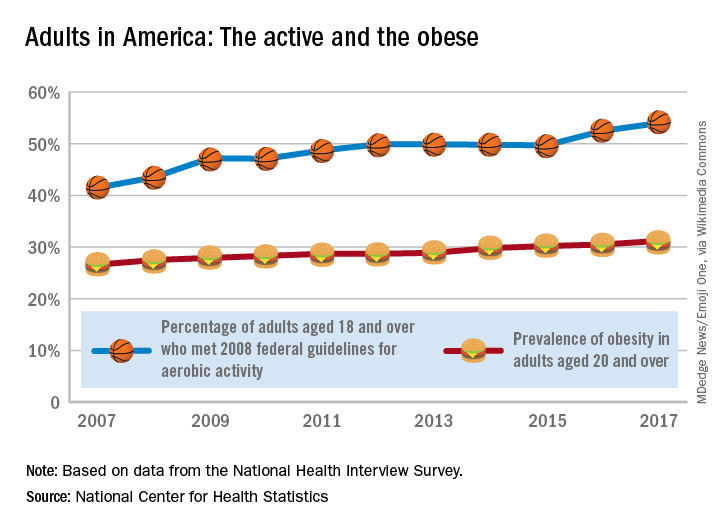Is it possible to get more exercise and still gain weight? In America it is.
The steady increase in obesity prevalence among adults in the United States has been exceeded over the last decade by the percentage of adults who are getting the recommended amount of exercise, according to the National Center for Health Statistics.
From 2007 to 2017, the age-adjusted prevalence of obesity among adults aged 20 years and over rose from 26.6% to 31.2%. Over that same 11-year period, the percentage of adults aged 18 years and over who met the 2008 federal guideline for aerobic activity increased from 41.5% to 54%, the NCHS reported based on data from the National Health Interview Survey.The 2008 guideline, “Physical Activity Guidelines for Americans” recommends that “adults perform at least 150 minutes a week of moderate-intensity aerobic physical activity, 75 minutes a week of vigorous-intensity aerobic physical activity, or an equivalent combination of moderate- and vigorous-intensity aerobic activity, performed in episodes of at least 10 minutes and preferably should be spread throughout the week,” the NCHS noted.


